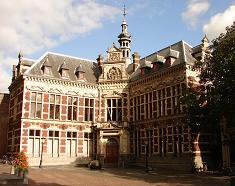Speaker
Jean-Philippe Lansberg
(IPN Orsay, Paris Sud U. / IN2P3-CNRS)
Description
I will briefly review the most important quarkonium-production results at fixed-target experiments (NA50, NA60, Hera-B, E866, ...) reported in the last decade. Then I will move onto the discussion of the many quarkonium-physics opportunities offered by A multi-purpose Fixed-Target ExpeRiment (AFTER) using the proton and lead Large Hadron Collider (LHC) beams extracted by a bent crystal. With a foreseen integrated luminosity of 0.5 fb−1 per year on a typical 1 cm-long target, AFTER would provide a quarkonium observatory, where their production can be analysed in great details in pp, pd and pA collisions at sqrt(sNN)= 115 GeV and at sqrt(sNN)= 72 GeV in PbA collisions. By instrumenting the target-rapidity region, the large negative-xF domain can be accessed for the first time, greatly extending previous measurements by Hera-B and E866. Such analyses should help resolving the quarkonium-production controversies and clear the way for gluon PDF extraction via quarkonium studies. The nuclear target-species versatility provides a unique opportunity to study nuclear matter and the features of the hot and dense matter formed in PbA collisions.
Primary author
Jean-Philippe Lansberg
(IPN Orsay, Paris Sud U. / IN2P3-CNRS)




